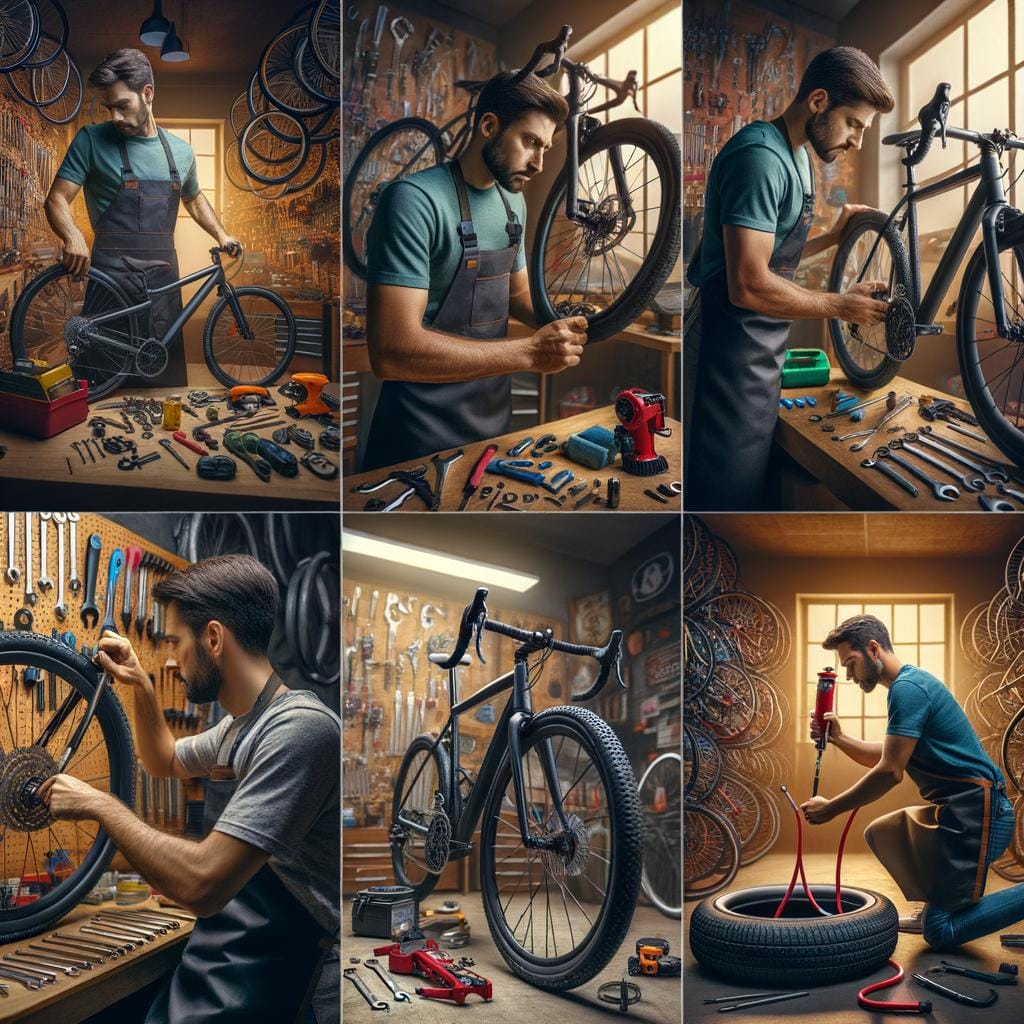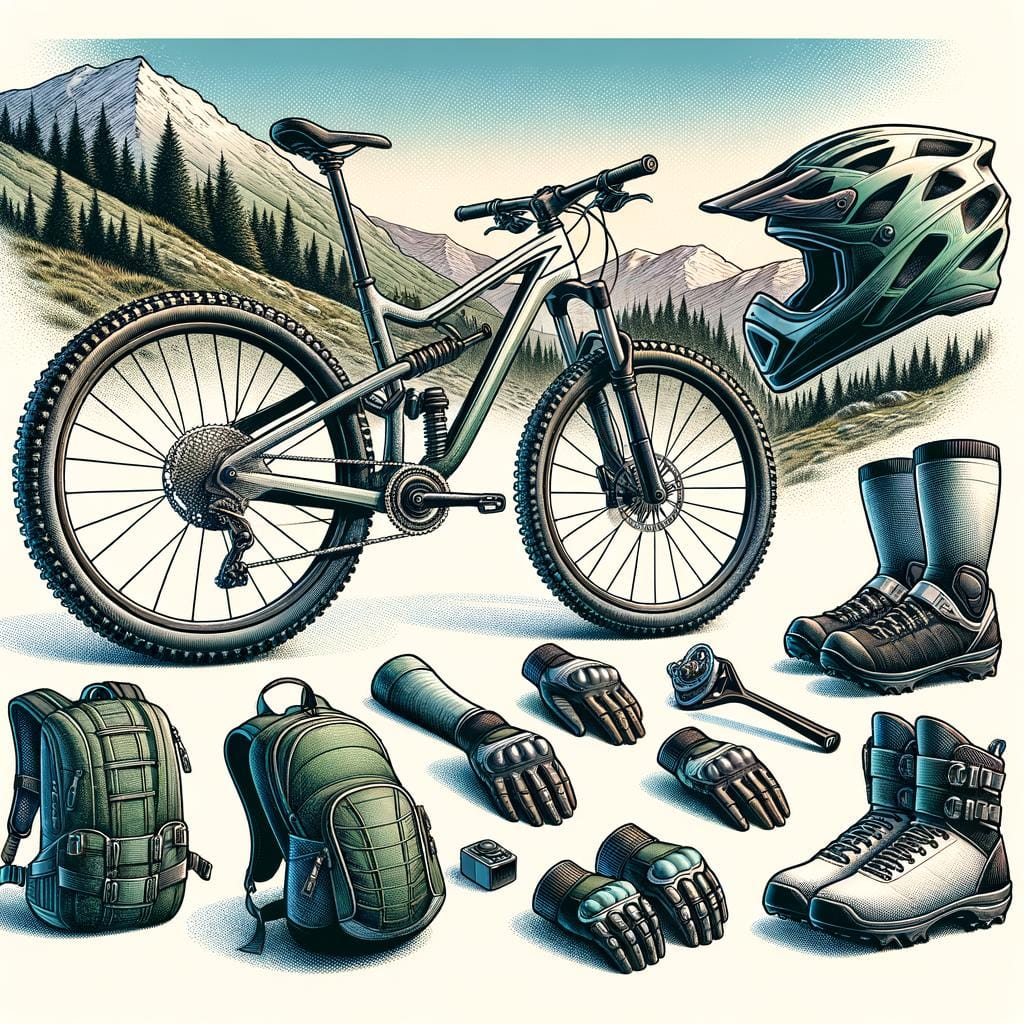Bike maintenance is a crucial aspect of being a responsible cyclist, ensuring that your ride remains safe, efficient, and enjoyable. Regular maintenance not only prolongs the lifespan of your bike but also enhances your overall riding experience. By incorporating proper bike maintenance into your routine, you can prevent costly repairs, breakdowns, and accidents on the road. Whether you are a seasoned cyclist or just starting out, understanding the basics of bike maintenance is essential for every rider.
To effectively maintain your bike, having the right tools is key. Basic bike maintenance requires a few essential tools that every cyclist should have in their toolbox. From tire levers to multi-tools, having the proper equipment on hand can make all the difference when it comes to fixing minor issues or conducting routine inspections. By investing in quality tools and familiarizing yourself with their use, you can confidently tackle any maintenance task that comes your way.
Before hitting the road on your bike, it is imperative to conduct a pre-ride inspection checklist to ensure that everything is in proper working order. Checking for loose bolts, properly inflated tires, functioning brakes, and smooth gear shifts are just some of the critical steps in preparing your bike for a safe ride.
By taking the time to inspect your bike before each ride, you can prevent potential hazards or mechanical failures while on the road. Stay tuned as we delve into more detailed tips and techniques for keeping your bike in prime condition through regular maintenance practices.
Essential Tools for Basic Bike Maintenance
Regular bike maintenance is crucial in order to ensure a safe and smooth ride every time you hit the road. One of the key aspects of effective bike maintenance is having the right tools at your disposal.
Every cyclist should have a basic toolbox that includes essential tools for common repairs and adjustments. Some of the must-have tools include tire levers, a puncture repair kit, a set of Allen keys, a chain tool, and lubricants for both chains and cables.
Properly maintaining your bike doesn’t have to be complicated or expensive, but having the right tools can make all the difference. For example, tire levers are essential for removing tires when repairing a puncture, while an Allen key set allows you to tighten or loosen bolts on various parts of your bike.
A chain tool is vital for fixing a broken chain on-the-go, and keeping your chain well-lubricated will prolong its lifespan and keep your drivetrain running smoothly.
Investing in quality tools upfront can save you time and money in the long run by allowing you to perform basic bike maintenance tasks yourself. By familiarizing yourself with how each tool works and practicing simple repairs, you can enhance your overall biking experience while also gaining invaluable skills in bike maintenance. Remember, regular upkeep and inspections can prevent costly repairs down the line and ensure that your bike remains in top condition for many rides to come.
| Essential Bike Maintenance Tools | Description |
|---|---|
| Tire Levers | For removing tires during puncture repair |
| Allan Keys | For tightening or loosening bolts on various parts |
| Chain Tool | For fixing broken chains on-the-go |
| Lubricants | For keeping chains and cables well-lubricated |
Pre-Ride Inspection Checklist
Before embarking on any cycling adventure, it is crucial to conduct a thorough pre-ride inspection of your bike to ensure its safety and optimal performance. A regular check-up can help prevent potential issues while on the road, giving you peace of mind during your rides. Here is a checklist that every cyclist should follow before hitting the road:
- Inspect the tires: Check for any signs of wear or damage, and ensure proper inflation according to the manufacturer’s recommendations.
- Examine the brakes: Test both the front and rear brakes to make sure they are working effectively and adjust them if necessary for optimum stopping power.
- Check the gears: Shift through all gears to ensure smooth transitions and make any adjustments needed for a seamless ride.
- Inspect the chain: Look for any rust, dirt, or signs of wear on the chain, and lubricate it if needed to prevent friction and prolong its lifespan.
In addition to these essential checks, don’t forget about other key components of your bike such as the pedals, handlebars, saddle, and frame. Making sure that everything is in proper working condition will not only enhance your riding experience but also contribute to your safety on the road. Regular pre-ride inspections should be part of every cyclist’s routine maintenance plan.
Remember that regular bike maintenance plays a significant role in extending the lifespan of your beloved two-wheeler. By investing time in pre-ride inspections and addressing any issues promptly, you can enjoy smoother rides with fewer unexpected hiccups. Stay proactive in taking care of your bike, and it will reward you with many more memorable journeys along scenic routes or challenging terrains. Happy cycling.
Tips for Cleaning and Lubricating Your Bike
Regular cleaning and lubricating of your bike is crucial to ensuring its optimal performance and longevity. Neglecting this aspect of bike maintenance can lead to unnecessary wear and tear, premature component failure, and a less enjoyable riding experience. By following some simple tips for cleaning and lubricating your bike, you can keep it in prime condition for many miles to come.
Choosing the Right Cleaning Products
When it comes to cleaning your bike, using the right products is essential. Avoid harsh chemicals that can damage sensitive components like your chain, cassette, and derailleur. Instead, opt for a mild bike-specific cleaner or simple dish soap diluted in water. Invest in a good quality brush set specifically designed for cleaning bikes to effectively remove dirt and grime from hard-to-reach areas.
The Cleaning Process
Start by rinsing your bike with water to remove any loose dirt and debris. Then, using your chosen cleaner and brushes, scrub down the frame, wheels, chain, and other components. Pay special attention to areas where dirt tends to build up, such as the drivetrain and brake calipers. Once you’ve thoroughly cleaned your bike, rinse off all remaining soap residue with clean water and dry it off with a soft towel.
Lubricating Your Bike
After cleaning your bike, it’s important to lubricate moving parts to ensure smooth operation and prevent corrosion. Apply a bicycle-specific lubricant to the chain, derailleur pulleys, pivots, cables, and any other moving parts that require lubrication. Be sure to wipe off any excess lubricant to prevent attracting dirt and creating a messy buildup.
Regularly lubricating your bike will not only improve its performance but also extend the life of its components. Incorporating these cleaning and lubricating tips into your regular bike maintenance routine will help keep your ride running smoothly for years to come.
Common Bike Maintenance Issues and How to Fix Them
Chain Maintenance
One of the most common bike maintenance issues cyclists face is a dirty or rusty chain. Regularly cleaning and lubricating your bike’s chain is essential for smooth shifting and optimal performance. To properly maintain your chain, start by using a degreaser to remove built-up grime and dirt. Once clean, apply a thin layer of lubricant to keep the chain running smoothly. Remember to wipe off any excess lubricant to prevent attracting more dirt.
Brake Adjustment
Having properly functioning brakes is critical for your safety while riding. If you notice that your brakes are making unusual noises or not stopping as effectively as they should, it may be time for an adjustment. Begin by checking the brake pads for wear and tear – replace them if necessary. Next, adjust the tension on the brake cables to ensure they engage properly when you squeeze the brake levers.
Tire Pressure and Puncture Prevention
Maintaining the correct tire pressure is crucial for a comfortable ride and reducing the risk of flats. Use a pressure gauge to check your tire pressure regularly, following the recommended PSI range indicated on the sidewall of your tires. Additionally, inspect your tires for any signs of wear or damage that could lead to punctures. Consider investing in puncture-resistant tires or tire liners to minimize the chances of getting a flat while cycling.
By staying proactive and addressing these common bike maintenance issues promptly, you can enjoy smoother rides and extend the longevity of your bike. Regularly inspecting and maintaining key components like the chain, brakes, and tires will not only improve your cycling experience but also enhance safety on the road. Remember that proper bike maintenance is essential for preserving both the performance and longevity of your beloved ride.
The Importance of Regular Tire Checks
Regular tire checks are essential for any cyclist looking to avoid unexpected flats and ensure proper inflation levels for a smooth ride. By incorporating this simple maintenance routine into your biking habits, you can extend the lifespan of your tires and improve overall performance on the road. Here are some key steps to follow when inspecting your bike’s tires:
- Check tire pressure: Use a reliable pressure gauge to measure the air pressure in each tire before every ride. Consult your bike manufacturer’s recommendations for the ideal PSI (pounds per square inch) range.
- Inspect for wear and tear: Examine the tread of your tires for any signs of excessive wear, cuts, or punctures. Replace worn-out tires promptly to prevent potential blowouts while cycling.
- Look for embedded debris: Inspect the surface of your tires for any sharp objects like glass, thorns, or nails that could cause punctures. Remove any debris carefully to prevent damage.
Properly inflated tires not only prevent flats but also enhance grip, handling, and overall ride comfort. Overinflated tires can lead to a harsh ride quality with less traction, while underinflated tires increase rolling resistance and are prone to pinch flats or rim damage. By maintaining optimal tire pressure levels regularly and checking for any signs of damage, you can enjoy a safer and more enjoyable biking experience.
In addition to regular tire checks, it’s important to remember that different types of bicycles require specific tire sizes and recommended pressure ranges. Road bikes typically have higher air pressure requirements compared to mountain bikes or hybrid bikes.
Always refer to your bike’s manual or consult with a professional at a local bike shop if you’re unsure about the correct tire specifications. Remember, proper bike maintenance starts with the basics like checking tire pressure and condition before every ride.
How to Adjust Your Bike’s Gears and Brakes
Fine-tuning your bike’s gears and brakes is crucial for optimal performance and a smooth ride. Proper adjustment of these components can significantly enhance your cycling experience, making shifting gears effortless and ensuring responsive braking when needed. In this section, we will discuss the steps to adjust both the gears and brakes on your bike to fine-tune their performance.
When it comes to adjusting your bike’s gears, start by checking the cable tension. If you notice any sluggishness or difficulty shifting, it may be due to loose or tight cables. Use the barrel adjusters on your shifters or derailleurs to make small adjustments until you achieve smooth shifting between gears. Additionally, check if your chain is properly lubricated and in good condition, as a dirty or rusty chain can also affect gear shifting.
In terms of brake adjustment, it is essential to ensure that your brakes are responsive and evenly aligned for maximum effectiveness. Begin by inspecting the brake pads for wear and tear, replacing them if necessary.
Then, adjust the brake cable tension using the barrel adjuster near the brake lever until you achieve the desired amount of stopping power. Finally, make sure that both brake pads contact the rim simultaneously when engaged to prevent any uneven braking that could compromise your safety on the road.
By taking the time to fine-tune your bike’s gears and brakes, you can improve your overall riding experience and efficiency on every journey. Regularly checking these components as part of your bike maintenance routine will not only enhance performance but also extend the lifespan of your bike. Remember that proper adjustments require attention to detail and patience, so don’t hesitate to seek professional assistance if needed for more complex issues with your gears or brakes.
Advanced Bike Maintenance Techniques
As a cyclist, learning advanced bike maintenance techniques can be incredibly beneficial in ensuring that your bike is always in optimal condition. While basic maintenance is essential, being able to tackle more complex repairs on your own can save you time and money in the long run. By mastering these skills, you can take your knowledge of bike maintenance to the next level and become more self-sufficient when it comes to caring for your ride.
One key aspect of advanced bike maintenance is knowing how to troubleshoot and fix more complicated issues that may arise. This includes replacing worn-out components such as chains, cassettes, or bottom brackets, as well as adjusting wheel bearings or headset bearings. By familiarizing yourself with the inner workings of your bike and understanding how each part functions, you can confidently tackle these repairs on your own.
Additionally, advanced bike maintenance techniques involve knowing how to properly tune and adjust components like derailleurs, brakes, and suspension systems. Being able to fine-tune these parts can significantly improve your bike’s performance and ensure a smoother ride. Mastering these adjustments requires patience and practice, but once you have a good grasp of these skills, you’ll have greater control over how your bike handles on the road or trail.
| Aspect | Details |
|---|---|
| Benefits of DIY Repairs | Saving time and money in the long run |
| Components | Chains, cassettes, bottom brackets, wheel bearings, headset bearings |
| Skills | Tuning derailleurs, brakes and suspension systems for better performance |
Conclusion
Proper bike maintenance is not just a chore to check off your list but rather a key component in ensuring the longevity and enjoyment of your ride. By regularly performing maintenance on your bike, you are not only extending its lifespan but also enhancing your overall cycling experience.
Whether it’s simple tasks like cleaning and lubricating or more advanced techniques like adjusting gears and brakes, taking the time to care for your bike will pay off in the long run.
Regular bike maintenance not only keeps your bike running smoothly but also enhances safety. A well-maintained bike is less likely to breakdown unexpectedly during a ride, reducing the risk of accidents or injury. Additionally, by staying on top of tire checks, gear adjustments, and brake alignments, you can ensure that your bike performs at its best at all times, giving you peace of mind while cycling on different terrains.
In conclusion, investing time and effort into proper bike maintenance is essential for any cyclist looking to enjoy their ride to the fullest. By following a pre-ride inspection checklist, using essential tools for basic maintenance tasks, and learning how to troubleshoot common issues, you can become more self-sufficient in caring for your bike.
So remember, regular upkeep is not only about keeping your wheels turning smoothly but also about maximizing the joy and satisfaction you get from each pedal stroke. Happy riding.
Frequently Asked Questions
What Maintenance Should I Do on My Bike?
Regular maintenance is crucial to keep your bike in top condition. This includes cleaning and lubricating the chain, checking tire pressure, inspecting brakes for wear, and ensuring all bolts are tightened. Keeping the drivetrain clean and properly adjusted is also important.
What Is Basic Bike Maintenance?
Basic bike maintenance involves tasks that can be done regularly to ensure your bike runs smoothly. This includes cleaning your bike after rides, checking tire pressure before each ride, inspecting brake pads for wear, lubricating the chain when needed, and making sure all components are properly tightened.
How Often Should a Bike Be Serviced?
The frequency of bike servicing depends on how often you ride and the conditions you ride in. As a general rule of thumb, most manufacturers recommend getting your bike serviced at least once a year or every 1000-2000 miles.
However, if you ride more frequently or in harsh conditions, more frequent servicing may be necessary to keep your bike running smoothly. Regular maintenance can help prevent costly repairs down the line.

An avid outdoor enthusiast, writer, and environmental advocate who has spent over two decades exploring the world’s most breathtaking landscapes. With a background in environmental science and a passion for adventure, Frances combines her love for nature with her talent for storytelling to inspire others to embark on their own outdoor journeys.




